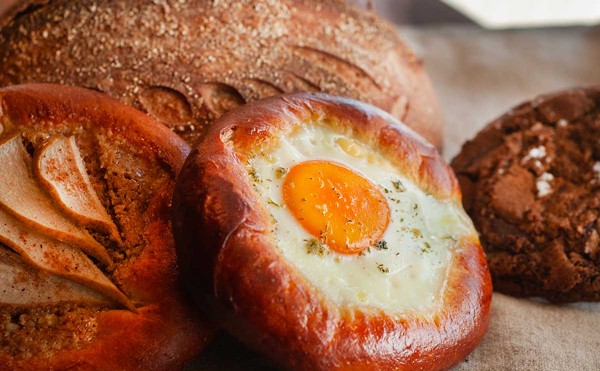Royal Kubo gets four stars simply for being something really different – a Filipino karaoke bar/restaurant. Your experience would be enhanced if you could go, as I did, with a person who grew up on Filipino food. For her seventh birthday, my guide, Linelle Mogado, received a halo-halo shaver (keep reading for an explanation), which may tell you something about the importance of food in the culture.
Basically, Filipino food is a mix of native methods and ingredients, influenced by Chinese customs and then again by the Spanish colonizers: rice, of course, and lots of garlic and vinegar, which make for tasty broths. No chopsticks – the traditional way to eat is with the hands, although the Westernized version is with fork and spoon.
A good place to start is with the combo dinner. This gives you pansit, a Chinese-like, thin-noodle dish with vegetables, chicken, shrimp, slices of hard-boiled egg and lemon to squeeze, plus a choice of one other dish. I ordered adobo, with pork, chicken and potatoes in a mild sauce – delicious, if a little greasy.
A special dish is kare-kare, a huge bowl of four big oxtails, green papaya, green beans and eggplant in a peanut sauce. This comes with a side dish of bagoong, a bright pink paste of baby shrimp, fermented and extremely salty; Linelle pointed out the tiny black dots that are the shrimps’ eyes. Use this sparingly if you’re not used to it – don’t just spoon up a mouthful the way I did.
I also tried shrimp sinigang, this time with giant adult shrimp, onion, eggplant, green beans and big hot peppers, all in a tamarind broth. It tasted great, although the size of the components and the liquidity of the soup made it perplexing to eat neatly.
Another good soup – "What you eat when you’re sick," said Linelle – was lemon-chicken-rice, quite lemony.
Cassava cake, a bland, cream-of-wheatish dessert, served warm, is a second comfort food. It would be perfect for a blue winter night – why anyone would invent it in the tropics is mysterious.The cuisine is generally aggressively meat-based – fried garlic and pork are used to start off and flavor just about everything, according to Linelle – but our vegetarian co-diner was quite pleased with the selection.
There are eggrolls – OK, but a pretty greasy wrapper – and pinakbet, a stew of smoky eggplant, tomatoes, long green beans and bitter melons. The latter are indeed bitter and are reputed to have medicinal qualities; as the owner walked by, he said, "Those are good for you."
Several dishes, such as papaitan, are based on tripe, liver or hog maws. There’s also ihaw-ihaw, which here is a choice of charbroiled or deep-fried fish. In the Philippines, it would be a spread of fresh raw meats and seafood.
Don’t leave without trying halo-halo (mix-mix). This is a dessert of shaved ice with condensed milk, cubes of leche flan (a custard), sweet red beans, white beans and fruit – maybe a mango, maybe a canned peach. It would be a lot better if the ice truly were shaved rather than in the pellets Royal Kubo uses. What happened to their halo-halo shaver?
The crowd is primarily Filipino, though all are made welcome. The karaoke officially begins at 9 p.m., but doesn’t really get going till much later. If you’re going primarily to sing, the menu does include T-bone steak, fried chicken and wing dings.






